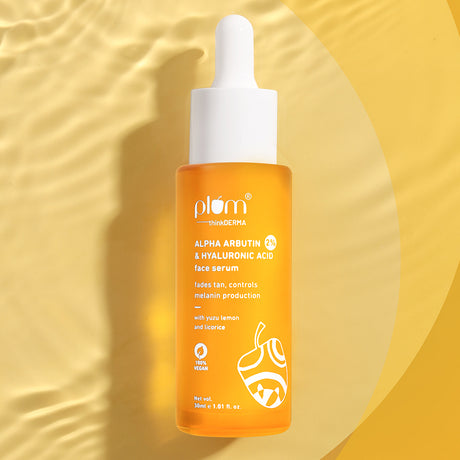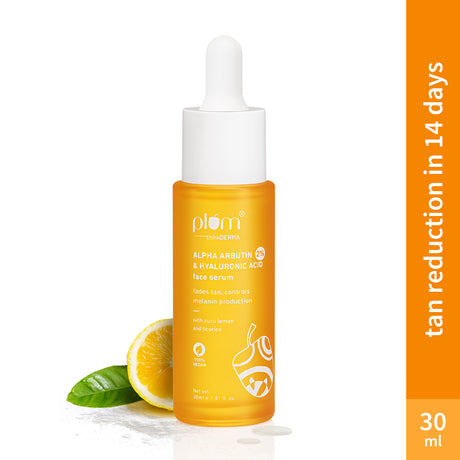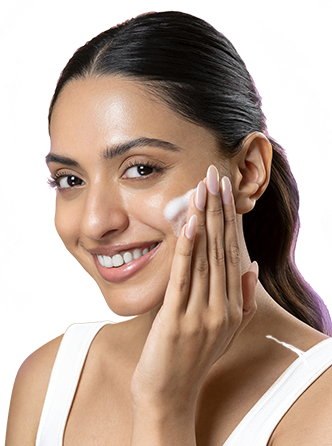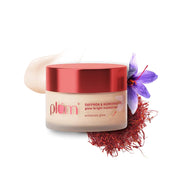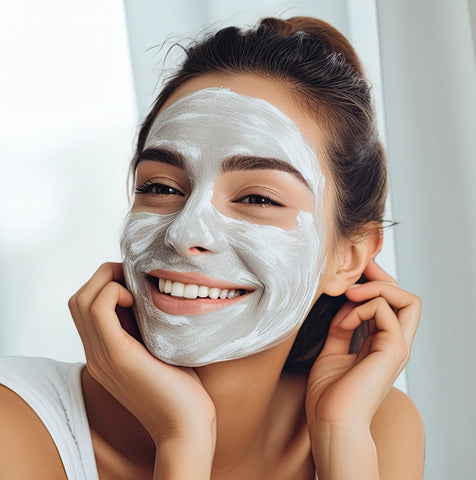
IN THIS ARTICLE
Winters are the perfect time to soak in some sunlight while the chilly winds freeze your bones. However, though it's a comforting feeling, it can adversely impact your skin.
Thanks to global warming and ozone layer depletion, exposure to the sun in the winter is as harmful as in the summer.
While the winter sun might not seem as harsh as its summer counterpart, it still packs enough UV rays to cause dark spots, unwanted tan, pigmentation, sunburn, and premature skin aging.
Therefore, though spending a few minutes in the sun is good for the skin and health, staying out for long without proper care could be a bad idea!
So does that mean you have to hide indoors to protect your skin all winter?
Certainly not.
Instead, you need to prevent your skin from sun damage, which is most widely evident in the form of tanning.
So, here we have simple steps that can help you prevent and reduce sun tan. Moreover, in case you want to know how to reduce sun tan, find the best tips for sun tan removal at home at the end.
But first, let’s start with the basics.
What causes skin tanning?
Skin tanning is caused by exposure to ultraviolet (UV) radiation from the sun.
When your skin is exposed to sunlight, the UV rays stimulate the production of melanin, the pigment responsible for skin color.
Melanin is the body's natural defense mechanism against UV radiation and sunburn.
Without melanin, you can get a sunburn faster and more severely.
However, the increased melanin production leads to a darker skin tone, commonly known as a tan.
Therefore, the more you spend time under the sun without SPF, the higher the chances of you getting tanned!
Why should you care about winter tanning?
Contrary to popular belief, the sun's rays in winter are equally harsh and capable of penetrating through clouds and snow, making you more susceptible to its harmful effects. Moreover, the reflection of sunlight off ice crystals and snow can further intensify UV exposure.
According to a study, up to 80% of the sun's rays can penetrate clouds and cause tanning. Therefore, you need to take measures for sun protection in winter months as well.
Before we seek answers to “how to remove a sun tan”, let's first look at the ways in which you can prevent tanning on your skin.
How to prevent sun tan?
While the simplest remedy to prevent sun tan is to avoid exposing your skin to direct sunlight at all, we know it's not an option all the time. But some steps can help you prevent getting tanned while you enjoy the sun in the chilly winters.
1. Avoid stepping outside when the sun is at its peak
Your skin is at a higher risk of tanning when it is exposed to the sun at its peak hours i.e., between 10 a.m. to 4 p.m. Therefore, avoid exposing your skin during these hours to prevent tanning. If it is important, ensure that you are adequately covered.
2. Load up on sunscreen
Sunscreen is the easiest and best way to prevent tanning and protect yourself against harmful UV rays.
You might be tempted to skip sunscreen if it's not sunny or it is foggy, especially in the winter months.
However, while the sun is always there, UV rays can very well penetrate the clouds and glass windows and harm your skin.
Therefore, make sure to apply sunscreen every day. Look for a sunscreen with at least 50 SPF and PA+++.
Moreover, ensure that you use sunscreen not only for your face and neck but also for all your exposed body parts like arms and legs.
Sunscreen can significantly help prevent sun tan and sunburn while giving you a youthful appearance.
A cream-based sunscreen will additionally save you against the harsh winter winds preventing dry skin.
3. Opt for full-sleeved clothes and turtlenecks
Look for full-sleeved clothes and overalls while picking your winter outfits. After all, it serves a dual purpose of protecting you from both the harsh winter winds and the sun. Look for tightly woven fabrics that will help create an additional barrier against winter tanning and cold. Moreover, you can elevate your winter style with wide-brimmed hats, scarves, and sunglasses.
4. Be cautious about medicines that can cause sun sensitivity
Many medicines and drugs can cause photosensitivity and lead to tanning. Medicines like antibiotics, antifungals, NSADs, etc., can make your skin more sensitive to the sun rays and make your skin more susceptible to sunburn and tan.
Similarly, many ingredients used in cosmetics can also do the same. Therefore, if you use any such medicines, be extra careful while stepping out and ensure that you take adequate precautions to avoid potential damage to the skin.
How to reduce tan on the face?
How to reduce sun tan on the face is a frequent question that people ask during the summer. But sun tan caused by winter also causes darkening of the skin.
So whether your skin gets tanned during the summers or winters, here are a few ways that can help you remove sun tan at home.
1. Exfoliate
Regular cleansing and exfoliation are some of the easiest remedies for sun tan removal. Exfoliation removes the dead skin cells and impurities from the epidermis which helps fade off tan from your skin.
Exfoliate your skin once a week with a mild exfoliator, scrub, or peel.
However, since it's winter and your skin tends to dry faster, ensure that you do not scrub your skin too hard or vigorously. Always follow up with your winter skincare consisting of toner, serum, and nourishing moisturizer.
2. Look out for active ingredients
Active ingredients like alpha arbutin are known to reduce tan and brighten your skin. Alpha arbutin controls the production of melanin in your skin which prevents and reduces tan.
To utilize the maximum alpha arbutin benefits, apply a dermatologically tested serum. You can also look for products infused with the active ingredient.
Additionally, using niacinamide can also help you reduce dark spots and blemishes.
3. Opt for DIY face scrubs
Some kitchen ingredients are very beneficial to remove sun tan at home. Potato and tomato juice are natural bleaches and packed with antioxidants that can help reduce tan and make your skin brighter. Similarly, gram flour and turmeric also reduce the darkening of the skin.
4. Consult a dermatologist
If tanning persists or you notice unusual changes in your skin, redness, or irritation, consult a dermatologist for suitable skincare recommendations.
To sum up
It's essential to take steps to protect your skin from harmful UV rays even in the winter to prevent tanning in the colder months. With easy steps like exfoliation, tan removal serums, and professional treatments, you can prevent winter sun tan and keep your skin looking its best.
Don't let winter sun tan ruin your complexion! Start protecting your skin today and enjoy the winter sun without worry.
FAQs
Why do you get darker skin in winter?
Along with overexposure to harsh sun rays, factors like cold weather, dryness, and skin conditions like eczema and psoriasis can leave dark spots. Moreover, the decreased humidity in the winter months can also cause darkness in the skin.
How long does it take for a tan to go away?
The duration of your tan depends on your skin and the extent of the tan. Sun tan can take anywhere between one to four weeks to fade off. However, if you have sensitive skin or if the sun tan is darker or deeper, it might take longer for your tan to go away.
Does the morning sun make you tan?
Yes, the morning sun can also cause tanning. However, in the morning sun, the sun rays are milder and therefore, less likely to cause deeper tanning or sunburn. Having said that, you must not skip sunscreen, whatever time of the day you expose your skin to the sun.
Can sunscreen prevent tanning?
Sunscreen can significantly protect your skin against harmful UV rays, sun tanning, and sunburn. However, if your skin is exposed to the sun at the peak afternoon hours or for a longer period, you might get tanned. If you cannot avoid getting exposed to the sun at its peak hours, reapplication of sunscreen is a must.







